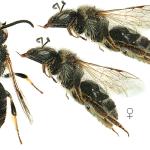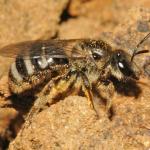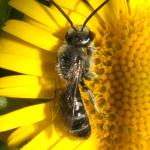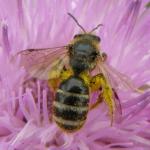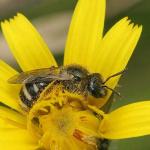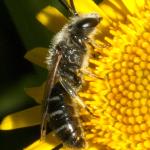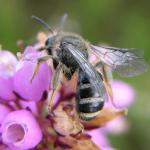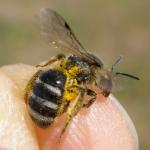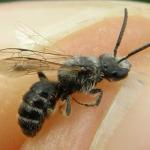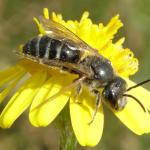Lasioglossum similis SMITH 1853
A widespread southern species, found in England and Wales north to Cumbria and Yorkshire; also found in the Isles of Scilly and the Channel Islands. An Holarctic bee; in the Palaearctic found throughout Europe east to the Russian provinces of Krasnoyarsk and Irkutsk, being mainly montane in the south of its range. There is some geographical variation in the east.
This species is not regarded as scarce or threatened.
Found in open areas, mainly on sandy and calcareous soils, scarcer on heavy clay.
Females can be found from late March to late October or early November. The male appears by mid-July but possibly earlier.
A solitary mining bee, sometimes nesting in aggregations. There are instances of two females digging in the same burrow but this may be communal rather than social activity. The nest is dug in flat to slightly inclined, light soil, in sparsely vegetated conditions or where there is a short sward. The burrow descends vertically with cells at the end of short side tunnels. Each female constructs from six to fifteen cells, which produce a sexual brood the same year. These mate and the females hibernate, probably not in the maternal nests as nesting aggregations do not always seem to be located in the same places in consecutive years (Pesenko et al. 2000).
Yellow-flowered Asteraceae are most frequently visited but visits to creeping thistle (Cirsium arvense) and other plants have been observed.
There are no host-specific Sphecodes on L. leucozonium but S. ephippius will parasitize this species and other Lasioglossum.
2009


